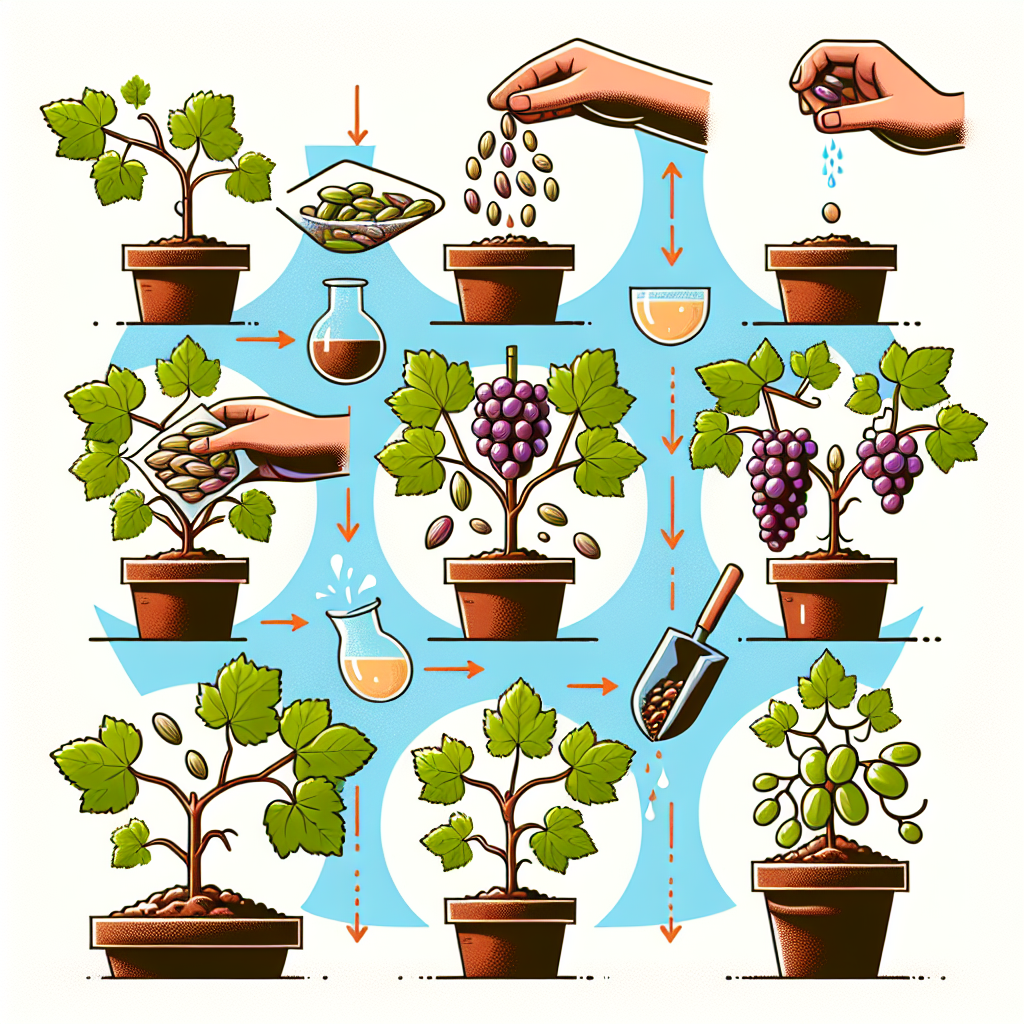
How to grow grape plants from seeds
How to Grow Grape Plants from Seeds: A Comprehensive Guide
Growing grape plants from seeds can be an incredibly rewarding project for both novice and experienced gardeners. While many people prefer to start their grape-growing endeavors with established plants, growing from seed offers a unique opportunity to learn about the entire process, from germination to harvest. In this article, we will guide you through the steps necessary to successfully grow grape plants from seeds, covering everything from seed selection to care requirements.
Understanding Grape Seeds
Before you start planting, it's important to understand the seeds you will be working with. Grape seeds are small and have a tough outer coating that protects the inner seed. To successfully germinate grape seeds, you often need to break this dormancy.
- **Types of Grapes** - Grape seeds come from different varieties, including table grapes, wine grapes, and ornamental grapes. Researching which type you want to grow is your first step.
- **Seed Selection** - Buy seeds from a reputable source to ensure they are viable. If you’re using seeds from store-bought grapes, ensure they are organic and free from chemicals.
Preparing Grape Seeds for Germination
To maximize your chances of germination, proper preparation is key. Here are the steps you should follow:
- Collecting Seeds: If you are harvesting seeds from grapes, do so from ripe fruits. Remove the seeds and rinse them to eliminate any residual fruit sugar.
- Stratification: Grape seeds need cold stratification to help mimic the natural winter dormancy. Place the seeds in a damp paper towel, fold it, and seal it in a plastic bag. Store it in the refrigerator for 30 to 60 days.
- Soaking Seeds: After the stratification period, soak the seeds in water for 24 hours before planting to aid germination.
Planting Grape Seeds
Now that your seeds are prepared, it’s time to plant them. The following steps will help ensure a successful planting:
- Choosing a Container: Use a seed-starting tray or small pots with drainage holes.
- Soil Selection: Use a well-draining potting mix. A combination of peat moss, perlite, and vermiculite works well.
- Planting Depth: Plant the seeds about half an inch deep in the soil.
- Watering: Water gently after planting but avoid overwatering as this can lead to rot.
Providing the Right Conditions for Growth
Once you've planted your grape seeds, the next step is to provide them with the right conditions for germination and growth:
- Temperature: Keep the planting area at a temperature between 70°F and 75°F (21°C to 24°C).
- Light: Grapevines love sunlight—once seedlings emerge, place them where they can receive at least 6 hours of direct sun each day.
- Humidity: To maintain humidity, you can cover the container with a plastic lid or wrap it in plastic wrap until seeds germinate.
Transplanting Seedlings
Once your seedlings have developed a few sets of true leaves, they're ready for transplanting. Follow these steps for a smooth transition:
- Timing: Wait until the last frost has passed before moving seedlings outdoors.
- Acclimating: Gradually acclimate your seedlings to outdoor conditions by placing them outside for a few hours each day for about a week.
- Choosing the Location: Select a site with well-drained soil and plenty of sunlight for the transplanted seedlings.
- Transplanting: Carefully remove seedlings from their containers, and plant them in the ground at the same depth they were growing in their containers.
Care and Maintenance of Grape Plants
After transplanting, maintaining healthy grape plants is essential to ensure strong growth and abundant fruiting. Here are some key aspects to consider:
- Watering: Young grape plants need regular watering, especially during the first couple of growing seasons. Once established, they are more drought-tolerant.
- Fertilizing: You can use a balanced fertilizer in early spring to promote vigorous growth.
- Pruning: Prune your grape plants in late winter or early spring to encourage better air circulation and to shape the vine.
- Pest and Disease Management: Keep an eye out for common pests like aphids and diseases such as powdery mildew. Use organic pesticides and fungicides where appropriate.
Harvesting Your Grapes
After years of patience and care, it’s time to reap your rewards! Here's how to determine when it's time to harvest your grapes:
- Timing: Grapes typically take 2-3 years to bear fruit, depending on the variety.
- Indicators: Check color, taste, and texture. Grapes should be plump and sweet!
- Harvesting: Use sharp scissors to cut clusters from the vine, taking care not to damage the plant.
Conclusion
Growing grape plants from seeds may take time and dedication, but the satisfaction derived from nurturing your flowers from seed to table is unparalleled. As you embark on this rewarding journey, remember to keep experimenting, learning, and enjoying the process. Whether you're growing grapes for personal consumption, wine-making, or ornamental purposes, the bond you create with the plants will add to the enjoyment of gardening.
"Gardening is a way of showing that you believe in tomorrow." - Author Unknown
By following this guide, you can confidently take the first steps on your journey of how to grow grape plants from seeds, ultimately leading to thriving vines in your garden and delicious grapes to enjoy!
By Guest, Published on August 16th, 2024